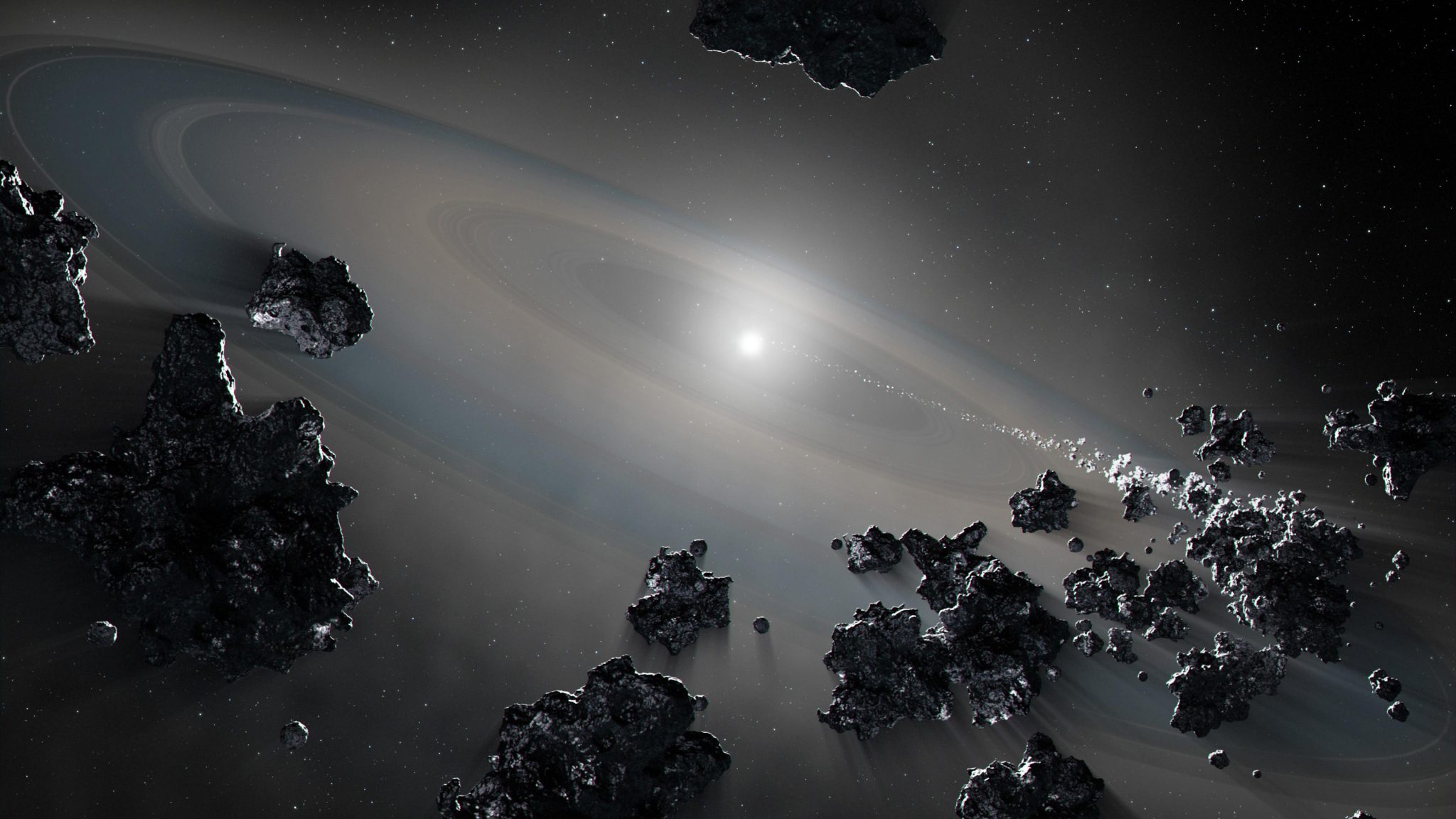SciTech Daily reports on results from a UCLA team, presented at an American Astronomical Society press conference on June 15.
The violent death throes of a nearby star caused such a severe disruption to its planetary system that the dead star left behind — known as a white dwarf — is suctioning in debris from both the system’s inner and outer reaches, University of California, Los Angeles (UCLA) astronomers and colleagues report.

This is the first instance of cosmic cannibalism where astronomers have observed a white dwarf star feasting on both rocky-metallic material, likely from a nearby asteroid, and icy material, presumed to be from a body similar to those found in the Kuiper belt at edge of our own solar system.
“We have never seen both of these kinds of objects accreting onto a white dwarf at the same time,” said lead researcher Ted Johnson, a physics and astronomy major at UCLA who just graduated. “By studying these white dwarfs, we hope to gain a better understanding of planetary systems that are still intact.”
As surprising as the white dwarf’s wide-ranging diet is, the findings are also intriguing because astronomers believe icy objects crashed into and irrigated dry, rocky planets in our solar system — including Earth. Billions of years ago, comets and asteroids are thought to have delivered water to our planet, sparking the conditions necessary for life. The makeup of the material detected raining onto G238-44 implies that icy reservoirs might be common among planetary systems, said research co-author Benjamin Zuckerman, a UCLA professor of physics and astronomy.
“Life as we know it requires a rocky planet covered with a variety of volatile elements like carbon, nitrogen and oxygen,” Zuckerman said. “The abundances of the elements we see on this white dwarf appear to have come from both a rocky parent body and a volatile-rich parent body — the first example we’ve found among studies of hundreds of white dwarfs.”
Getting the solar system and planetary conditions right is certainly necessary for life’s existence, but why imply that all it takes is a planet with a solid surface that has some liquid water, orbiting in the habitable zone around most any star, and voilà, life is sparked into existence? Are researchers really that ignorant of the devastatingly difficult job natural forces face in transforming even the most ideal “dirt” into a living organism?